If you’ve not skated for years and are coming back into it, you might be shocked to discover a whole bunch of new looking skates with just three wheels. What are these all about? They’re becoming more popular, though not as skates to learn on mind you. They’re sometimes known as tri-skates. So, why do they exist?
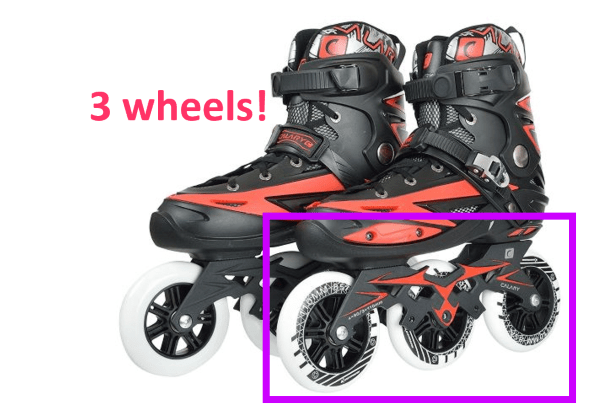
What’s the difference between 3 wheel and 4 wheel inline skates? Skates with three wheels, tri-skates, are less stable than your regular 4-wheel skate and not really ideal for those learning to skate, but they go fast because of the big wheels, with better maneuverability than skates with four wheels the same size.
Okay so to really understand the difference between these skates and why three wheels and four wheels exist in the first place, you have to understand what skate designers are trying to help skaters do on the skates, and how the designs affect that. Below is a full and (hopefully) simple explanation that will almost make you sound like an expert on the subject.
Which Should I Buy – 3 Wheel Inlines or 4 Wheels?
If you’re asking this question there’s a good chance you haven’t been skating for a while, and you’re coming to this new. Or it could be you’ve been skating and you want to understand the difference a bit more.
Basically, if you’re a beginner skater, going straight in at those big three wheels is going to be quite unstable and not a good way to learn. You don’t need that extra speed. It’s not like you’re going to be in races or anything. It would probably be fine after a while but there’s going to be a long stretch of danger and dodgyness. And in fact, even if you’re quite good that’s likely to happen as well as you get used to it being higher, and in a significantly less stable position with bigger wheels.
The standard model of skates 76mm or 80mm, the recreational or the fitness skates are going to be great for reaching decent enough speeds.
The difference between those standard ones and the big three wheels is speed. But it’s speed at the high end, as in, if you want to maintain a very fast speed for a longer time. You’re still going to be able to go fast on the four wheeled variety with the slightly smaller wheels. You seriously don’t need that extra speed if you’re starting out, or if you’re getting back into skating after a long time. The danger and instability you get with the three wheels probably just isn’t going to be worth it. It’s rare that anyone who isn’t a really avid skater gets the three wheeled ones. Become really good first.
Now, if you’re already a good skater, then your answer is above. Basically you get more speed. Less stability. More speed with basically the same degree of maneuverability. Whereas with the four wheeled skates with bigger wheels’ 90-110mm, you’re getting probably even more speed when you go long distances, just a tiny bit more, but less maneuverability. It’s easier to turn on the three wheeled skates in a smaller turning circle.
3 Wheels Vs. 4 – A Graphical Explanation Of The Difference Between the Skates
So, let’s go into this a bit more and explain the difference between tri-skates with big wheels (110mm), the skates with four big wheels (90-110mm) and the standard skates most people have with four wheels (around 80mm).
It’s worth pointing out as a matter of fact, that skates come with different wheel set ups to achieve different things. You get skates with 2 wheels, 3 wheels, 4 wheels, 5 wheels and even 6 wheels.
They vary depending on what you’re trying to do with the skate. Some have small wide wheels which provide a lot of stability and grip – these are suitable for skating on ramps and doing tricks for example. Some have much bigger wheels that get you more speed and you definitely loose a little stability, but you don’t need it for what you’re doing.
Explanation of the Difference
There are a few factors that differ between the types of skate set ups on the wheels, and the type of boot you get.
The ones that matter for this discussion are:
Speed – bigger wheels go faster
Maneuverability – wheels under the boot rather than those which extend beyond the back and front make the skate more maneuverable
Stability – this is a combination of how high off the ground (you can wobble more) and how far they extend out the front and back (extending does provide some stability)
Brands basically looked to keep the speed of big wheels, and the maneuverability of not having the wheels extend too far out the front and back of the skate. They did this by removing one wheel and having three big ones instead of four small/medium wheels. These took up the same amount of space front to back, but of course they force the frame to be taller, so you go higher off the ground. This means you get the speed, and you get the maneuvaerability of turning fast because the wheels don’t extend, but you sacrifice in stability.
Here is a four wheel standard skate, let’s say these wheels are around 78mm or 80mm. These your standard skates. It’s hard to go wrong with these.

In summary, if you’re a beginner it’s going to be harder with less stability to pick it up and maybe not worth it.
The difference between three wheels and four wheel inline skates explained
Ok, so let’s have a basic look at the different types of stability and maneuverability you get from the different wheel set ups.
Imagine this person here travelling towards the right side of the screen.
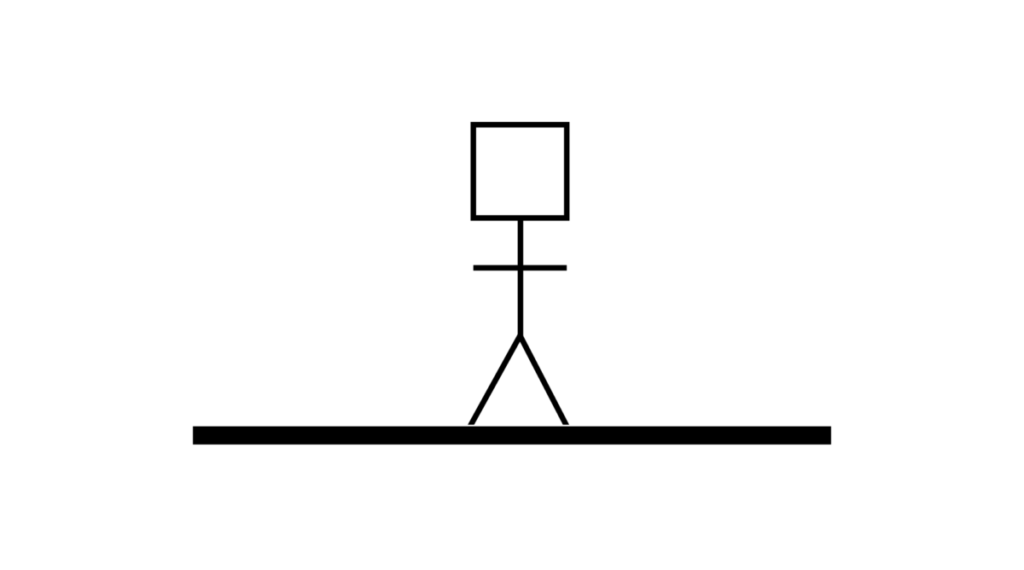
She’s going to find it hard to turn left and right because of all that friction in front and behind her, and that set up ‘wants’ to go straight. She’s going to have a larger turning circle.
Some skates are set up like that because they have four big wheels and can get up to very fast with four big wheels on the ground.
Whereas this guy here:
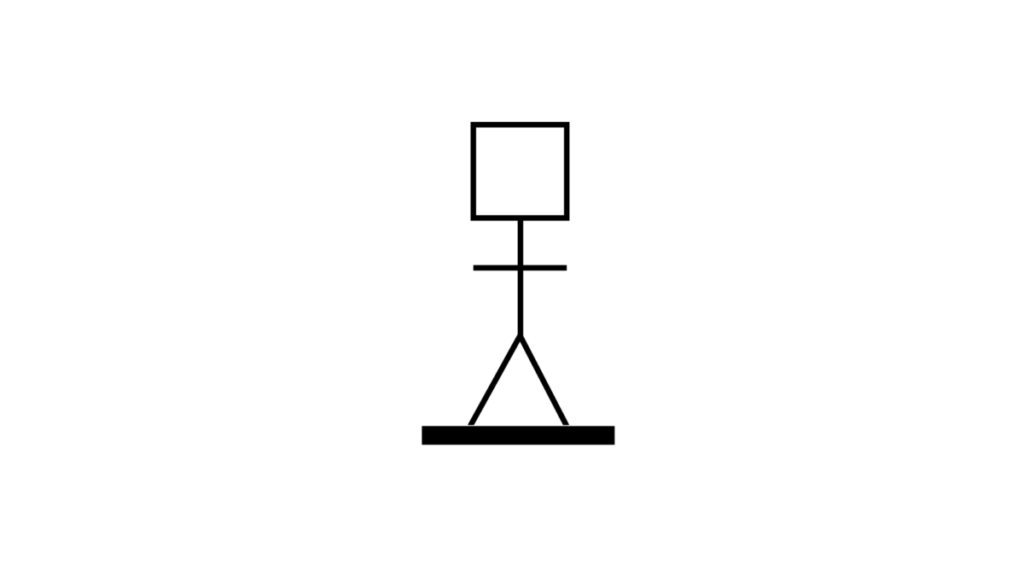
He’s going to find it much easier to turn, isn’t he? Basically he doesn’t have to exert so much power with his body and foot, and the turning circle is so much smaller.
So that’s maneuverability.
Now let’s come to stability.
This girl here:
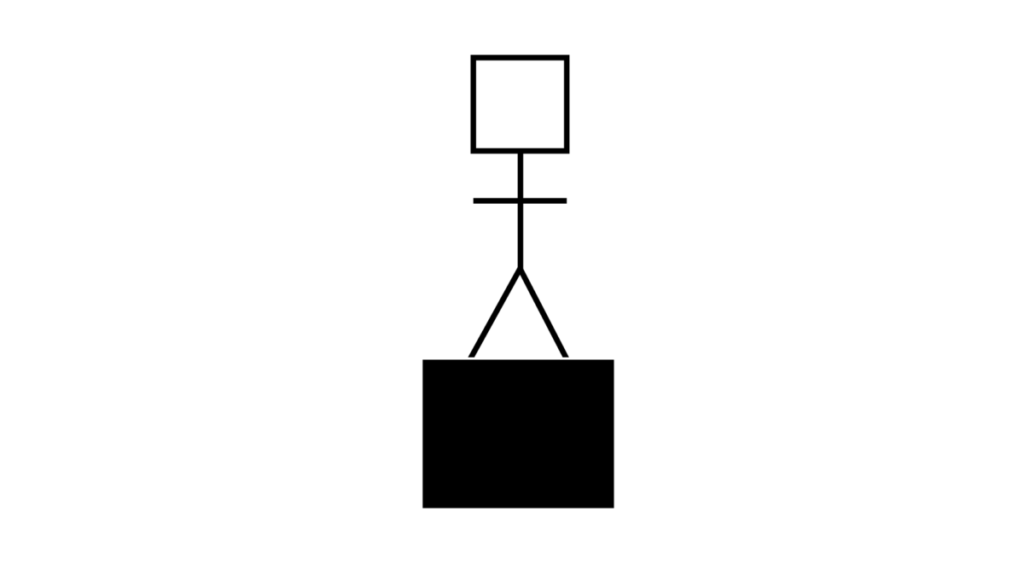
She’s going to feel less stable than this guy:
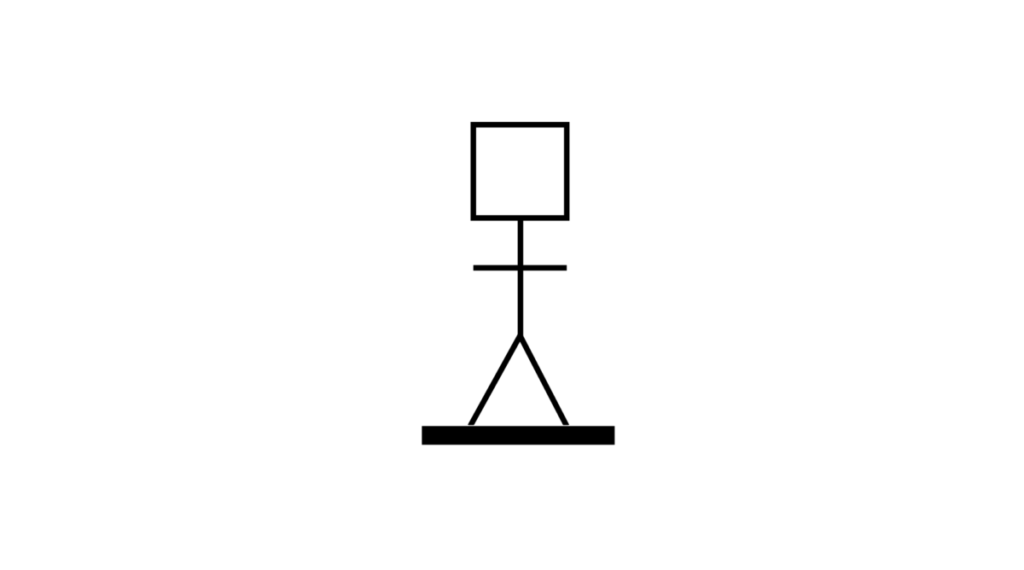
And that’s because higher off the ground you can wobble more side to side.
Whereas if you extend out the front to back, you get a little more stability in the sense that you’re not going to fall forwards and back, but it’s still a lot less stable than being close to the ground.
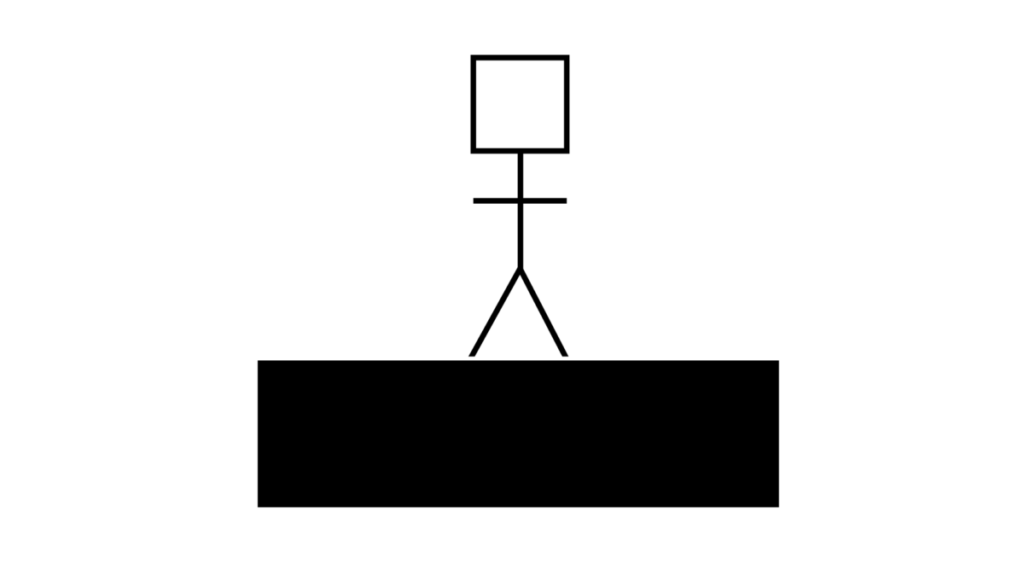
Now, this is where we get into what the skate manufacturers have done by removing one wheel, and when they choose to change the size of the wheels.
This example could represent your 4 x 80mm or 4 x 76mm.
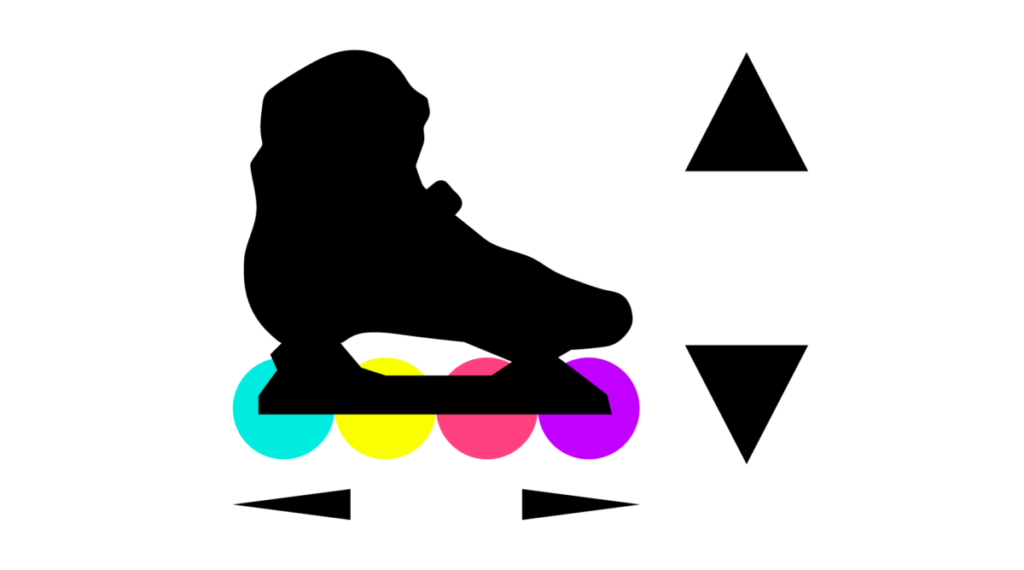
Notice the height and the length. The length does not extend too far out the front and the back of the skate. Most people use these skates. If you’re a beginner, you can’t go wrong getting these.
You’ll be able to skate around the streets, in the park, and get a decent speed up going decent distances. You’ll be able to join skate events and get around. These aren’t designed for ramps, and they’re not really designed for races.
Now, critically, notice what happens when we make the wheels bigger. These could represent the 90 – 110mm wheels.
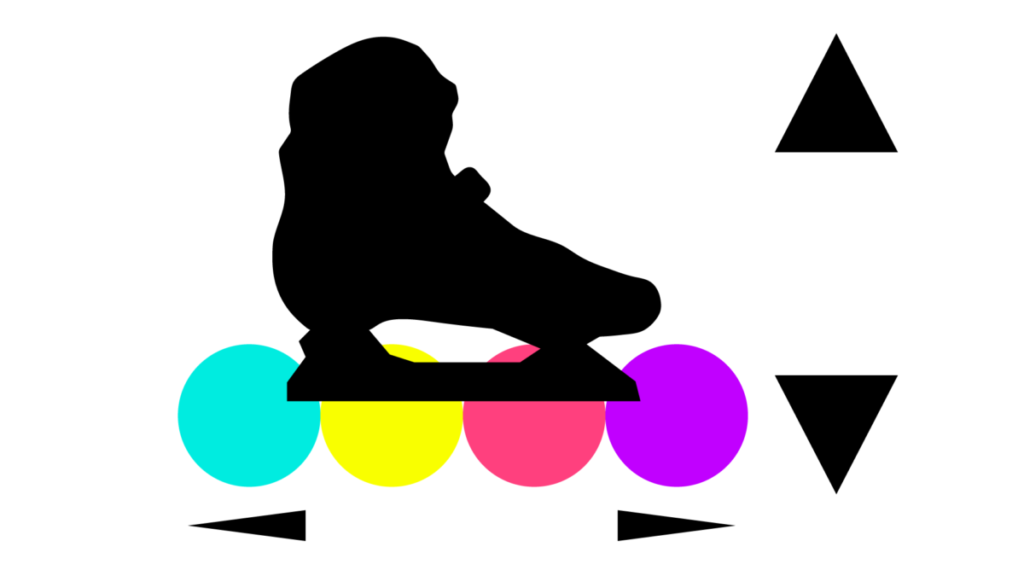
Here, we’re after speed. Bigger wheels = faster.
(as long as they’ve got good bearings of course, which they almost certainly will)
But they take you higher off the ground giving you less stability. And they extend to the front and back, giving you less ability to do tight turns.
They can feel very different and be much harder to get used to.
Now, what happens when you remove a wheel?
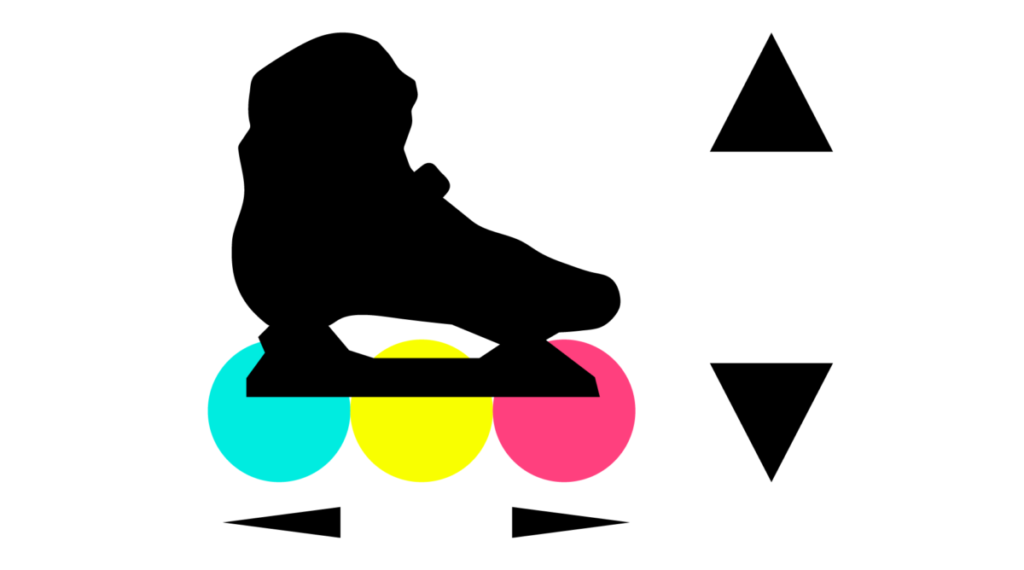
You’ve kept the same size wheels but just taken one away.
When you remove a wheel you get the ability to manuevre more, turning in a smaller circle. But, you get to keep the speed that comes with bigger wheels. However, notice that they’ve had to make the frames higher to fit the bigger wheels, so you’re higher off the ground. This means a big difference in the stability you get.
A factor to consider is when you’re taller on the boot, you really need a good boot to stabilise you more. That’s why the speed skater skates are so extreme, because they go with a smaller boot, and the big wheels. If you think you want to experiment with these bigger wheels at some point, don’t buy a recreational skate because you can’t upgrade them. Buy a freestyle skate with four wheels (check you can upgrade the wheels to the bigger size, which often you can), then upgrade later when you get used to skating on the four wheels.

